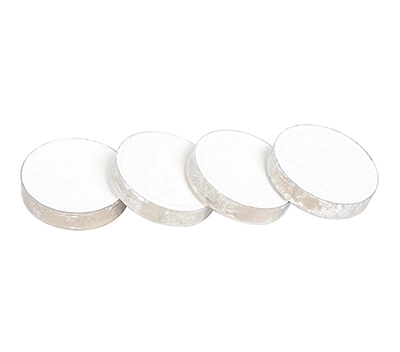Vacuum insulation panels (VIPs) are at the forefront of modern insulation technology, offering superior thermal resistance compared to traditional insulation materials. However, one of the most critical challenges they face is hydrogen diffusion. Over time, hydrogen infiltration can degrade the vacuum within VIPs, reducing their effectiveness. This article explores the phenomenon of hydrogen diffusion, its impact on VIP performance, and how getter materials play a pivotal role in mitigating these effects.

Hydrogen diffusion refers to the movement of hydrogen molecules through the materials comprising a VIP. These molecules can penetrate from external sources or be released internally by the panel's materials during outgassing. Factors influencing hydrogen diffusion include:
Material Permeability: The ease with which hydrogen passes through the VIP’s barriers.
Temperature: Higher temperatures increase molecular movement and diffusion rates.
Environmental Exposure: Prolonged exposure to hydrogen-rich environments accelerates ingress.
Hydrogen is the smallest and most mobile gas, making it particularly challenging to contain. When hydrogen infiltrates a VIP:
Internal Pressure Increases: Hydrogen compromises the vacuum state by filling the evacuated space.
Thermal Conductivity Rises: As the vacuum degrades, heat transfer through gas molecules increases, diminishing insulation efficiency.
Service Life Shortens: The VIP’s performance lifespan is significantly reduced, especially in high-demand applications like refrigeration or construction.
Getter materials are specifically engineered substances that trap and neutralize hydrogen molecules, preserving the vacuum and ensuring optimal panel performance.
1. What Are Hydrogen Getter Materials?
Hydrogen getters are materials designed to capture and retain hydrogen through physical or chemical interactions. Effective getters exhibit:
High Adsorption Capacity: The ability to trap large amounts of hydrogen.
Durability: Resistance to environmental and operational degradation.
Compatibility: Seamless integration with VIP materials.
2. Mechanisms of Hydrogen Removal
Adsorption: Hydrogen molecules adhere to the surface of the getter.
Absorption: Hydrogen diffuses into the bulk of the getter material.
Catalytic Reactions: Hydrogen reacts chemically with the getter, forming stable compounds.
1. Metallic Getters
Metals like zirconium, titanium, and magnesium are common choices due to their high reactivity with hydrogen. These getters are often alloyed for enhanced performance.
2. Non-Metallic Getters
Materials like zeolites and organic polymers trap hydrogen through physical adsorption or weak chemical interactions. They are lightweight and versatile but may have lower capacities compared to metallic getters.
3. Advanced Materials
Nanotechnology-based getters offer significant improvements in adsorption capacity and speed. Hybrid materials combining metallic and non-metallic properties are also emerging as effective solutions.
1. Strategic Placement of Getters
Getters are strategically placed within VIPs to maximize exposure to hydrogen molecules. Placement considerations include:
Near Permeable Barriers: To intercept hydrogen before it penetrates deeply.
Distributed Placement: Ensures uniform protection across the panel.
2. Size and Capacity of Getters
The quantity of getter material must align with expected hydrogen levels. Overloading can lead to unnecessary costs, while underloading risks inadequate protection.
3. Manufacturing Considerations
VIP design must accommodate getters without compromising structural integrity or thermal performance. This involves:
Material Compatibility: Ensuring getters do not react adversely with other panel components.
Compact Integration: Maintaining the thin profile of VIPs.
1. Testing Methods
Adsorption Capacity Tests: Measure the volume of hydrogen a getter can capture.
Long-Term Performance Tests: Evaluate getter efficiency over extended periods under varying conditions.
2. Environmental Stress Testing
Getters are tested under extreme temperatures and humidity to simulate real-world conditions and ensure reliability.
3. Comparative Studies
Performance comparisons between traditional and advanced getters highlight improvements in efficiency, cost-effectiveness, and longevity.
Hydrogen diffusion poses a significant threat to the performance and longevity of VIP panels. Getter materials offer an effective solution by trapping hydrogen and preserving the vacuum state. While challenges like cost and saturation exist, advancements in getter technology continue to improve their efficiency and practicality. For industries relying on VIPs, investing in high-quality getter materials is crucial for maintaining insulation performance over time.